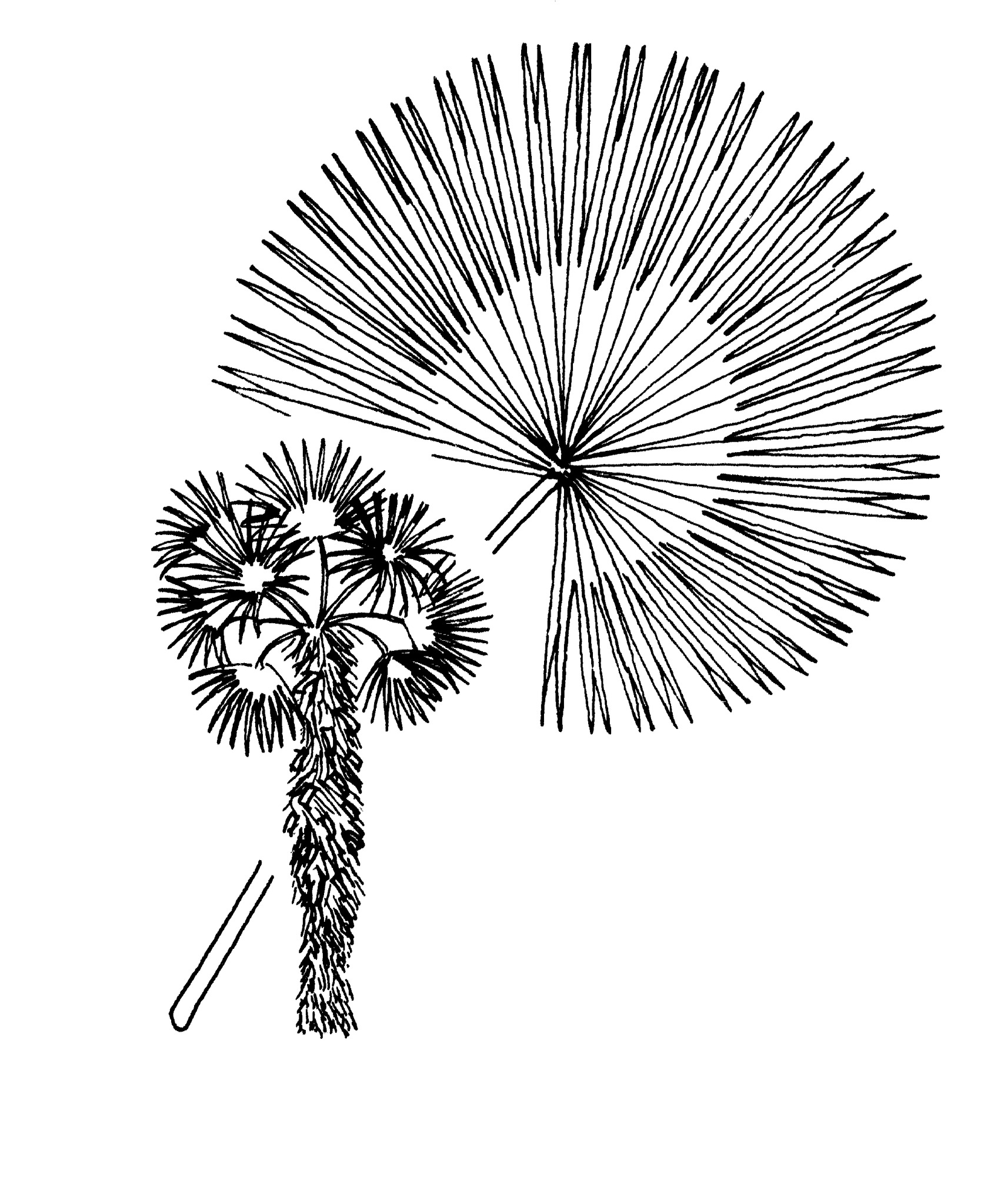
Latin or Greek tri – three, thrinax – trident, probably referring to the leaf division.
Slow growing solitary or clustering spined palms. Trunk covered by an intricate layer of fibre and spines, at least near the top. Leaves 5-35, fan-shaped and with a midrib (costapalmate), deeply divided over half way into stiff, spreading leaflets. Leaf sheaths fibrous and bearing, at the top, outward- and downward-pointing spines. Leaf stalks long, smooth. Leaflets each cut shallowly to deeply in two and sharply pointed at the tips. Flowers bisexual. Panicles arising among the lower leaves. Fruits round to ovoid, white at first but becoming black, 1 seeded.
Hardy sun loving, cold tolerant palms which occur in open habitats growing in limy or saline soils. Novelties for temperate and subtropical zones.
Fresh seed which takes 3-8 months to germinate.
Sturdy prickly solitary or clustering palms with fibres and spines on the trunk and fanshaped leaves divided into numerous, narrow stiff leaflets.
5 species occurring in Bolivia, Brazil, Paraguay, Uruguay and Argentina.
NSW: Sydney (Royal Botanic Garden Sydney).
Source: (2005). Arecaceae. In: . Horticultural Flora of South-eastern Australia. Volume 5. Flowering plants. Monocotyledons. The identification of garden and cultivated plants. University of New South Wales Press.
